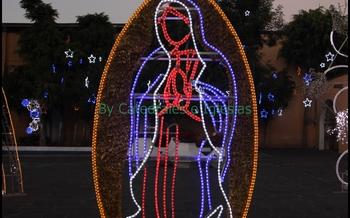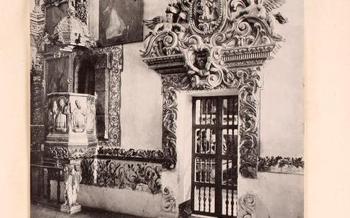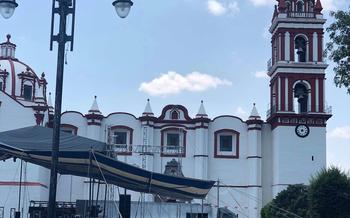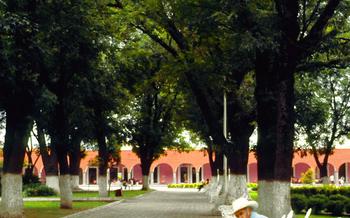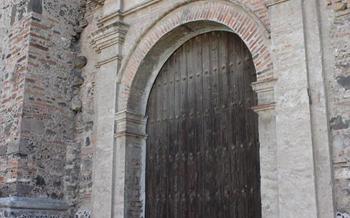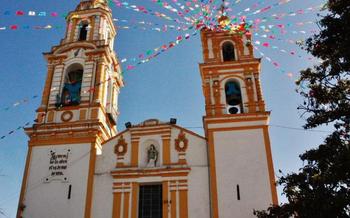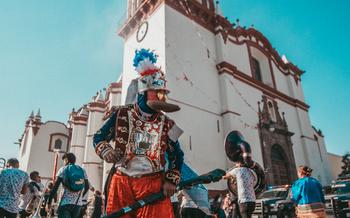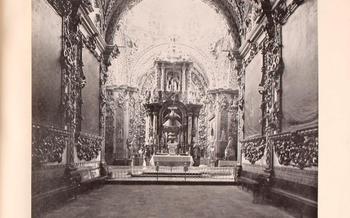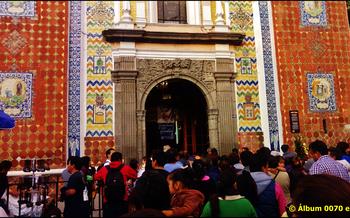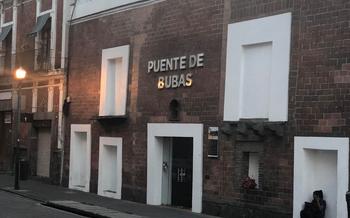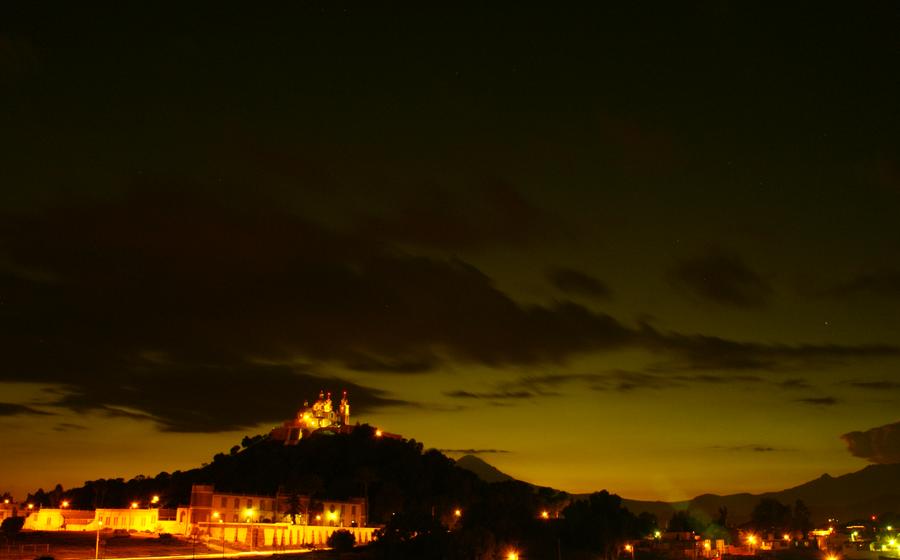
Francisco Peláez Ethnobotanical Garden
- The Man Behind the Garden: Francisco Peláez
- Exploring the Garden's Diverse Collections
- Highlights of the Garden's Collections
- The Importance of Ethnobotany
- Engaging Educational Programs
- Research and Conservation Initiatives
- A Must-Visit for Nature Enthusiasts
- Tips for a Rewarding Visit
- Photography and Social Media
- Souvenirs and Local Products
- Nearby Attractions and Activities
- Accessibility for Visitors with Disabilities
- Sustainability and Environmental Awareness
- Insider Tip: Hidden Gems
The Man Behind the Garden: Francisco Peláez
Francisco Peláez was born in Cholula, Mexico, in 192From a young age, he developed a deep fascination with the natural world, particularly the diverse plant life that surrounded him. His passion for botany led him to pursue a degree in biology at the National Autonomous University of Mexico (UNAM), where he excelled in his studies.
After graduating, Peláez returned to Cholula and dedicated his life to the study and conservation of the region's rich flora. He recognized the importance of preserving the traditional knowledge associated with plants and their uses in Mexican culture.
With a vision to create a space that would showcase the region's botanical heritage, Peláez founded the Francisco Peláez Ethnobotanical Garden in 198Through his tireless efforts and dedication, the garden became a center of botanical research, conservation, and education, attracting visitors from around the world.
Peláez's contributions to botany and conservation earned him numerous accolades, including the prestigious "Premio Nacional de Ciencias y Artes" (National Prize for Science and Arts) in 200He passed away in 2012, leaving behind a legacy of scientific research, conservation efforts, and a deep appreciation for the beauty and importance of the natural world.
Exploring the Garden's Diverse Collections
The Francisco Peláez Ethnobotanical Garden is a treasure trove of botanical diversity, showcasing a wide range of plant species and ecosystems. From majestic trees to delicate wildflowers, the garden's collections offer a fascinating glimpse into the rich flora of Mexico and beyond.
Variety of Plant Species and Ecosystems
One of the highlights of the garden is its impressive collection of plant species. Visitors can explore different sections dedicated to various ecosystems, including tropical rainforests, temperate forests, arid regions, and aquatic habitats. Each section features a unique array of plants adapted to their specific environments, providing a comprehensive overview of the diverse plant life found in Mexico.
Classification and Organization of the Garden
The garden is meticulously organized to facilitate exploration and learning. Plants are classified and arranged according to their scientific families, allowing visitors to easily identify and compare different species. Informative signage provides detailed information about each plant, including its common and scientific names, origin, and medicinal or cultural significance.
Guided Tours and Educational Programs
To enhance the visitor experience, the garden offers guided tours led by knowledgeable botanists. These tours provide an in-depth look at the garden's collections and highlight the unique features and stories behind each plant. Additionally, the garden hosts educational programs, workshops, and seminars throughout the year, catering to both casual visitors and serious plant enthusiasts.
Highlights of the Garden's Collections
The Francisco Peláez Ethnobotanical Garden is home to a diverse range of plant species, including many unique and endangered varieties. Among the highlights of the collection are:
-
Endemic and Threatened Species: The garden is a sanctuary for numerous plant species that are native to the region and face threats of extinction due to habitat loss and climate change. Visitors can observe and learn about these unique plants, contributing to their conservation efforts.
-
Medicinal Plants: The garden showcases a wide variety of medicinal plants, each with its own unique healing properties. Visitors can discover the traditional uses of these plants in treating various ailments and ailments, gaining insights into the rich ethnobotanical traditions of the region.
-
Edible Plants: The garden also features a collection of edible plants, including fruits, vegetables, and herbs. Visitors can learn about the culinary uses of these plants and appreciate the diversity of flavors and textures they offer.
-
Cacti and Succulents: The garden is home to a vast collection of cacti and succulents, representing diverse species from around the world. Visitors can admire the unique adaptations of these plants to arid environments and learn about their ecological importance.
The Importance of Ethnobotany
Ethnobotany, the study of the relationship between plants and human cultures, holds immense significance at the Francisco Peláez Ethnobotanical Garden. This discipline delves into the traditional uses of plants by indigenous communities for various purposes, including medicine, food, rituals, and spiritual practices. The garden serves as a repository of knowledge, showcasing the rich cultural heritage associated with plants.
Ethnobotanists document and preserve traditional plant knowledge, ensuring that it is not lost due to cultural assimilation, language loss, or the disappearance of elders who hold this knowledge. By understanding the traditional uses of plants, we can gain valuable insights into the diverse ways in which plants have been integrated into human societies throughout history.
The garden provides a platform for researchers and visitors to explore the intricate connections between plants and human cultures. Through educational programs, workshops, and guided tours, the garden promotes the importance of ethnobotany and raises awareness of the need to conserve not only plant species but also the cultural heritage associated with them.
Engaging Educational Programs
The Francisco Peláez Ethnobotanical Garden offers a diverse range of educational programs that cater to visitors of all ages and interests. These programs aim to deepen the understanding of ethnobotany, promote environmental awareness, and foster a love for nature.
Workshops, seminars, and conferences are regularly organized to delve into specific topics related to ethnobotany. Experts and researchers share their knowledge and insights on plant-human interactions, traditional uses of plants, conservation, and more.
Field trips and hands-on activities provide an immersive experience for students and visitors to explore the garden's diverse collections firsthand. Guided tours led by experienced botanists offer a deeper understanding of plant species, their medicinal and cultural significance, and the importance of conservation.
Educational resources and publications are made available to visitors, including brochures, books, and online resources. These materials provide additional information on the garden's collections, ethnobotanical research, and conservation initiatives. The garden also hosts regular exhibitions and events to showcase its work and engage the community.
Research and Conservation Initiatives
The Francisco Peláez Ethnobotanical Garden is not just a place to admire and appreciate plants; it is also a hub for research and conservation initiatives. Collaborations with universities and institutions have led to groundbreaking research on plant taxonomy, ecology, and ethnobotany. The garden serves as a field laboratory for students, researchers, and scientists, providing them with a unique opportunity to study plant diversity and its relationship with human cultures.
Conservation programs play a crucial role in the garden's mission. It actively participates in the conservation of endangered plant species, working to protect and propagate rare and threatened plants. The garden's staff collaborates with local communities to promote sustainable practices and raise awareness about the importance of plant conservation. Through these efforts, the garden contributes to the preservation of Mexico's rich biodiversity and cultural heritage.
Promoting sustainable practices is another key aspect of the garden's initiatives. It encourages visitors to adopt responsible tourism behaviors, such as respecting the garden's rules and regulations, avoiding littering, and supporting local businesses that prioritize sustainability. The garden's commitment to environmental awareness extends beyond its borders. It actively engages in outreach programs, workshops, and seminars to educate the public about the importance of plant conservation and the need to protect the environment.
A Must-Visit for Nature Enthusiasts
The Francisco Peláez Ethnobotanical Garden is a haven for nature lovers, boasting a rich tapestry of biodiversity and captivating natural beauty. As you stroll through the garden's winding paths, you'll be greeted by an array of stunning flora, from vibrant wildflowers to towering trees. The garden's diverse ecosystems, including tropical rainforests, desert landscapes, and alpine meadows, create a mesmerizing and ever-changing panorama.
Inhale the heady fragrances of exotic blossoms and listen to the gentle rustle of leaves as the breeze whispers through the canopy. Take a moment to pause and observe the intricate details of each plant, from the delicate petals of a rare orchid to the sturdy spines of a desert cactus. The garden's peaceful and serene atmosphere provides a sanctuary for contemplation and connection with the natural world.
As you wander deeper into the garden, you'll be rewarded with breathtaking views of the surrounding landscape. From the lush valleys below to the distant mountain peaks, the panoramas are simply stunning. Find a secluded spot to sit and soak in the tranquility, letting the beauty of nature wash away your worries. The Francisco Peláez Ethnobotanical Garden is a true feast for the senses, offering a unique and enriching experience for nature enthusiasts of all ages.
Tips for a Rewarding Visit
To make the most of your visit to the Francisco Peláez Ethnobotanical Garden, consider the following tips:
-
Timing is Key: Plan your visit during the dry season (November to April) for optimal weather conditions and to witness the garden in its full glory. The garden is generally open from 9 am to 5 pm, Tuesday through Sunday.
-
Dedication is Rewarded: Allocate sufficient time to explore the garden thoroughly. Allow at least two to three hours to amble through the various sections, admire the plant collections, and soak in the serene atmosphere.
-
Dress Appropriately: Considering the garden's natural setting, choose comfortable clothing and sturdy footwear suitable for walking on uneven terrain. Don't forget to bring along a hat and sunscreen to protect yourself from the sun.
Photography and Social Media
The Francisco Peláez Ethnobotanical Garden is a visual feast for nature enthusiasts and photographers alike. Capture the beauty of the diverse plant collections, the vibrant colors of the flowers, and the stunning views of the surrounding landscape through your lens. Share your experiences on social media using relevant hashtags to inspire others to explore this hidden gem. Showcase the garden's unique offerings and contribute to its growing popularity among nature lovers worldwide. Remember to tag the garden's official social media accounts and use geotags to ensure your posts are seen by a wider audience.
Souvenirs and Local Products
Your visit to the Francisco Peláez Ethnobotanical Garden can be a meaningful way to support local communities. As you stroll through the garden, take the opportunity to browse the collection of locally-made handicrafts and souvenirs. These unique items, crafted by skilled artisans, provide a tangible connection to the region's rich cultural heritage.
From intricate pottery and colorful textiles to handwoven baskets and traditional jewelry, there's a treasure trove of souvenirs waiting to be discovered. By purchasing these locally-made products, you not only take home a piece of Cholula with you but also directly contribute to the economic empowerment of the local community.
Remember, each purchase you make supports the livelihoods of these artisans and their families. It's a small gesture that makes a big difference in preserving traditional crafts and ensuring that these cultural traditions continue to thrive for generations to come.
Nearby Attractions and Activities
Beyond the lush sanctuary of the Francisco Peláez Ethnobotanical Garden, Cholula offers a wealth of captivating attractions. Embark on a journey through the historic center, where colonial architecture and vibrant street life intertwine. Unravel the mysteries of the Great Pyramid of Cholula, the largest pyramid in the world by volume. Indulge in the delectable flavors of local cuisine at traditional markets, savoring authentic Mexican dishes that tantalize the taste buds. For a truly immersive experience, interact with the friendly locals, whose warmth and hospitality are as captivating as the city itself.
Accessibility for Visitors with Disabilities
The Francisco Peláez Ethnobotanical Garden is committed to providing an inclusive and accessible experience for visitors with disabilities. The garden's pathways are wheelchair accessible, and there are ramps and elevators to all levels of the garden. Additionally, there are accessible restrooms and designated parking spaces for visitors with disabilities. The garden staff is also available to provide assistance to visitors who need it.
Wheelchairs can be rented at the garden's entrance for a small fee. Visitors who require a wheelchair are encouraged to reserve one in advance to ensure availability. The garden also offers guided tours for visitors with disabilities. These tours are led by trained guides who can provide information about the garden's plants and history in a way that is accessible to everyone.
The garden's website provides detailed information about accessibility, including maps and photos of the accessible features. Visitors with disabilities are encouraged to visit the website before their visit to plan their trip.
By making these accommodations, the Francisco Peláez Ethnobotanical Garden strives to ensure that everyone can enjoy the beauty and educational value of the garden.
Sustainability and Environmental Awareness
As a responsible traveler, it is crucial to promote sustainable tourism practices during your visit to the Francisco Peláez Ethnobotanical Garden. Respect the garden's rules and regulations, which are in place to protect the delicate ecosystems and plant species. Avoid littering, stay on designated paths, and refrain from picking or disturbing the plants.
Moreover, consider your environmental impact by opting for eco-friendly transportation options and reducing your carbon footprint. Encourage sustainable travel practices by supporting local businesses that prioritize sustainability and conservation efforts. Together, we can contribute to the preservation of this unique garden and its invaluable biodiversity.
Insider Tip: Hidden Gems
Beyond the well-known trails and exhibits, the Francisco Peláez Ethnobotanical Garden holds hidden gems waiting to be discovered by curious explorers. Venture off the beaten path to uncover secluded corners and rare plant species that may have escaped your initial notice. Keep an eye out for the delicate ghost orchid, a rare and elusive epiphyte that blooms with ethereal white flowers during the summer months. In the heart of the garden, amidst a lush canopy of trees, you may stumble upon a hidden waterfall, its gentle cascade creating a tranquil oasis. For those with a keen eye, the garden's diverse ecosystems offer a glimpse into the intricate relationships between plants and their environment. Observe the interactions between pollinators and native flora, such as the vibrant monarch butterflies that flutter among the milkweed plants. Embrace the opportunity to explore the garden's hidden treasures and create lasting memories of your visit.
